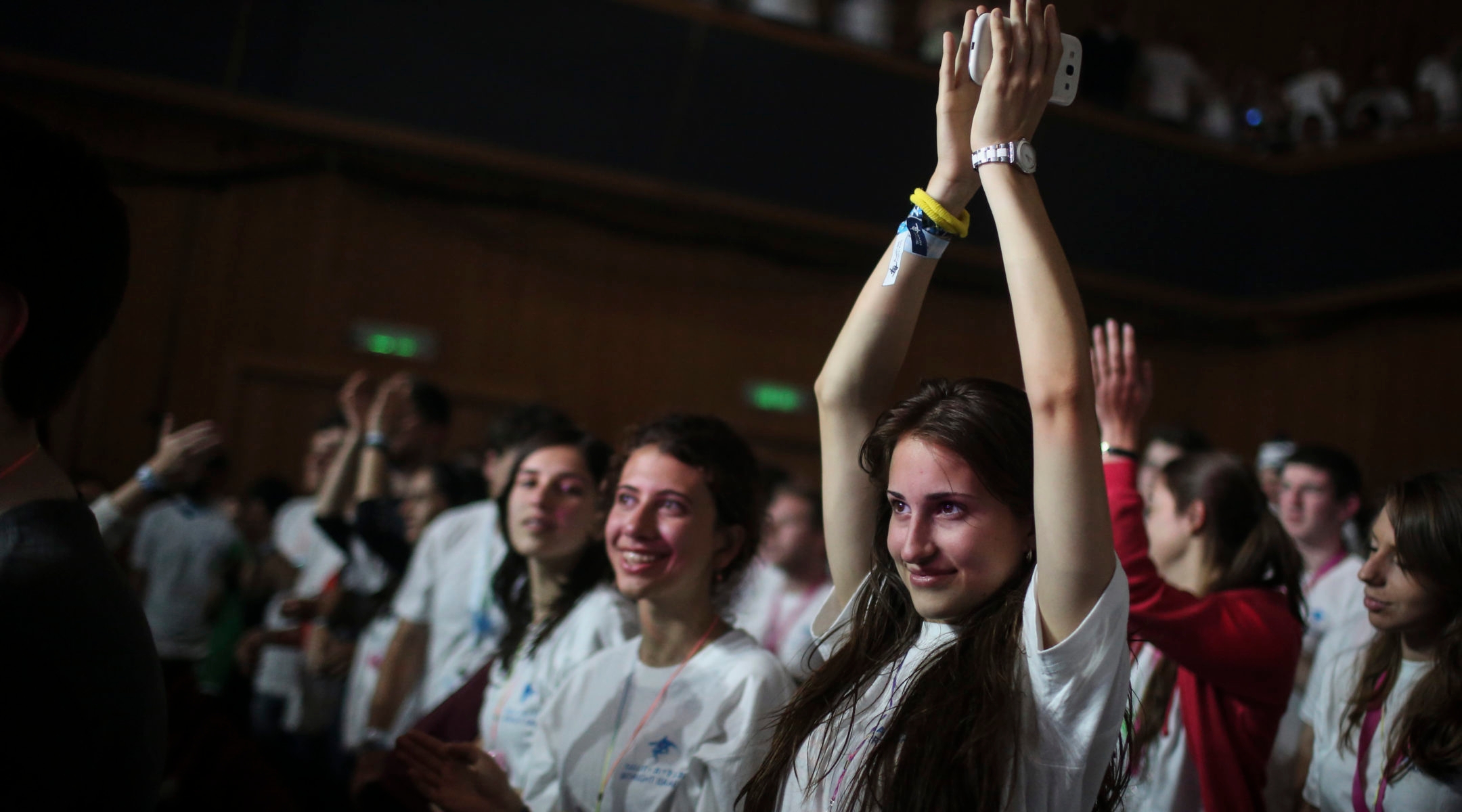TRAVERSE CITY, Mich. (JTA) – The year was 2000, and Michael Steinhardt had just dropped a bombshell that nearly brought an otherwise dignified conference to blows.
“I tend, in my dourest moments, to consider both the Reform and Conservative Jews as historic accidents in the 21st century and suspect, before the end of this century, they will have disappeared,” he said.
Steinhardt, along with Edgar Bronfman and Charles Schusterman, was in Chicago at a meeting of STAR: Synagogue Transformation and Renewal, which was ostensibly designed to find ways to get young people back into synagogue pews.
This and similar statements by Bronfman had understandably irked Rabbi Eric Yoffie, then-president of the Union for Reform Judaism. Undermining non-Orthodox synagogues was not the way to encourage experimentation.
“I’m not going to get into a pissing match with Rabbi Yoffie over whether the Reform movement is a good movement or not because that’s not the point,” the secular Bronfman told me. “The point is, we have a crisis and I don’t care how we go about getting young people involved in their Jewishness.”
Of course, it turned out that the Bronfman-Steinhardt answer was Birthright Israel.
At the time of this dispute, I was the managing editor of the Jewish Telegraphic Agency. While covering the birth of Birthright, I often heard echoes of this deep depression and desperation among Jewish leaders to attract the young.
Today, when Jewish leaders talk about problems facing young Jews, it is often not their lack of affiliation that’s in focus, but what they see as increased anti-Semitism in the form of anti-Zionism on college campuses. There may be fewer young Jews in the pews now, but as Jewish Theological Seminary professor Jack Wertheimer told me, that’s because millennials are waiting longer to have children. Many have yet to practice what Wertheimer calls “Judaism for peak moments” like bar and bat mitzvah or family-friendly holidays such as Purim.
Yet for some reason, young campus Jews on the front lines of this fight against anti-Semitism may never be counted among the affiliated if they never join a synagogue. It seems to be a lost opportunity if we did not find a way to welcome them into the fold. Anti-Semitism has given them a heightened sense of Jewish identity, but the institutions aren’t in place or are unwilling to offer them a positive path into the Jewish fold.
Though initiatives like STAR and Birthright begin to address the issue, there are too few places that welcome Jews who feel a renewed sense of Jewishness in response to anti-Semitism but don’t necessarily feel comfortable attending shul.
Going through my 20-year-old notes, I am struck at how often Jewish lay and religious leaders voiced a fear that an end to anti-Semitism would further erode the tenuous connection young people had to Judaism. Ironically, the rise in Jewish activism in response to anti-Semitism could be an opportunity to find a place for them.
In 2019, while our institutions are hashing out the same arguments, American Jews are faced with an altogether different existential crisis: the rise of American anti-Semitism. Now is the perfect time to truly reckon with what it means to be a Jew and who gets counted as a member of the tribe because people who never thought about their Judaism before are now constantly reminded of it by anti-Semites.
It is a sad contrast, the difference between the Jewish mood of 20 years ago and today. There is a renewed sense of solidarity and purpose among Jews of all denominations in light of the threat of anti-Semitism coming from outside.
Yet even though they were wrong about an end to anti-Semitism, the machers of two decades ago were right in turning the discussion to how to embrace more Jews who acknowledge only a tenuous connection to Judaism. That was the original thought behind Birthright Israel.
Today, as I interview people whose connection to Judaism is strengthened through the rise in anti-Semitism, it is still the case that many are unaffiliated with synagogues. Twenty years ago, they would have been counted as lost to Judaism – and these “cultural Jews” are still not counted in many official surveys or in institutional decisions.
I was an odd choice for managing editor of JTA. I knew very little about the organized Jewish world, having grown up primarily in small communities, often one of only a handful of Jews in town. The way I practice Judaism is very personal and not at all communal. The publisher at the time hired me for my news judgment first, connection to Judaism second. I guess you could say that I was JTA’s own private Birthright experiment.
After the breakdown of talks between Ehud Barak and Yasser Arafat and the beginning of the second intifada, I left JTA, moved back to Michigan and pivoted my career to cover science and technology. Sixteen years later, I began writing about Jewish issues again after I noticed more swastikas in my social media timeline following a decade and a half of being relatively swastika-free.
I never wanted anti-Semitism to define the way I write about Judaism. But the rise in anti-Semitism can perhaps help us see clearer than we did 20 years ago. We can see who is with us and who is not. Jews are standing up to be counted. I would be more optimistic for the future if we found a way to embrace them.
JTA has documented Jewish history in real-time for over a century. Keep our journalism strong by joining us in supporting independent, award-winning reporting.







